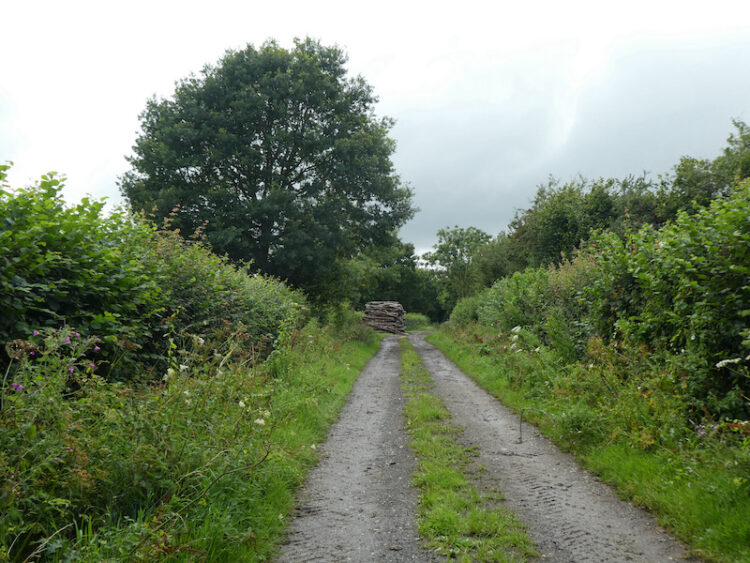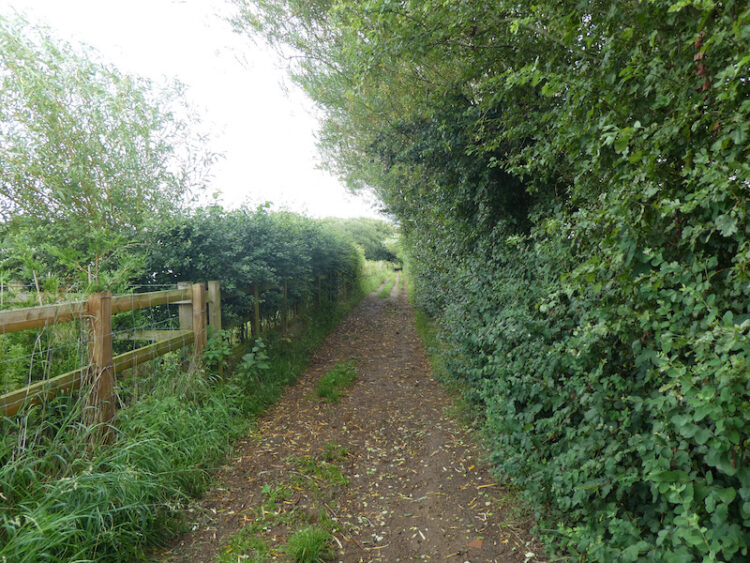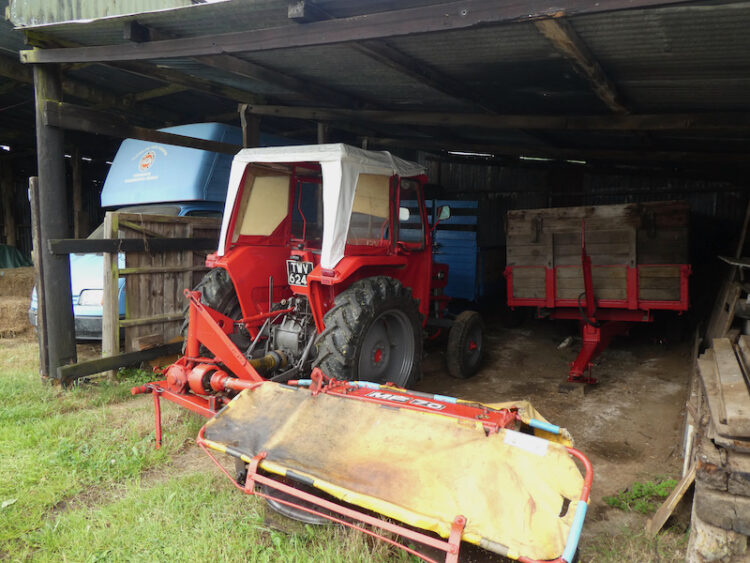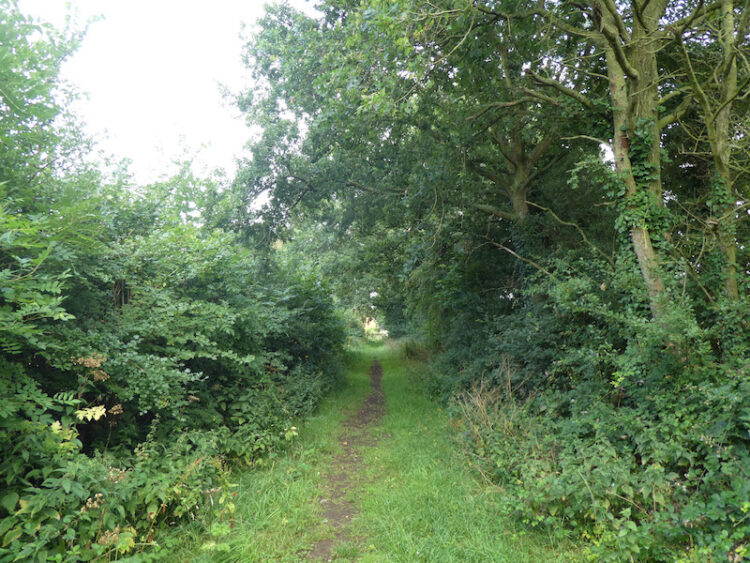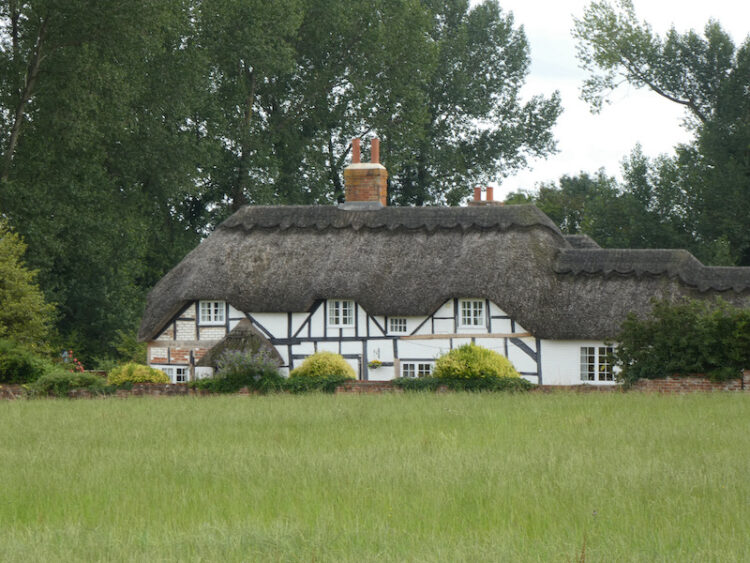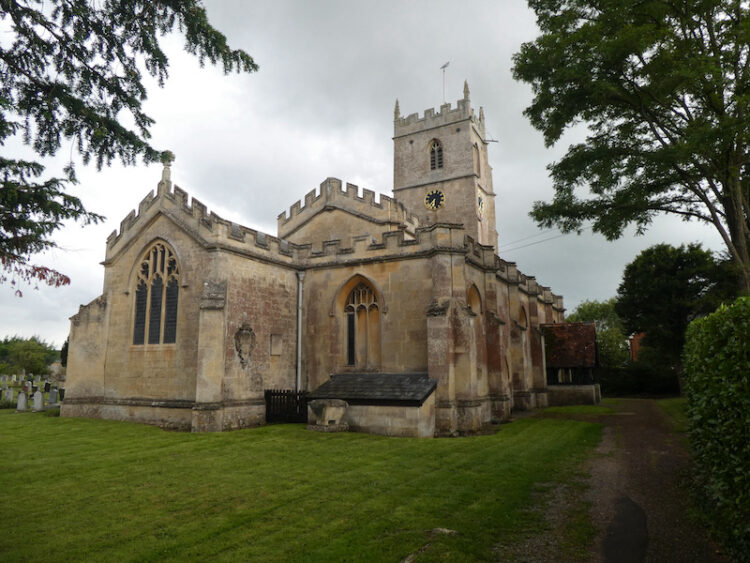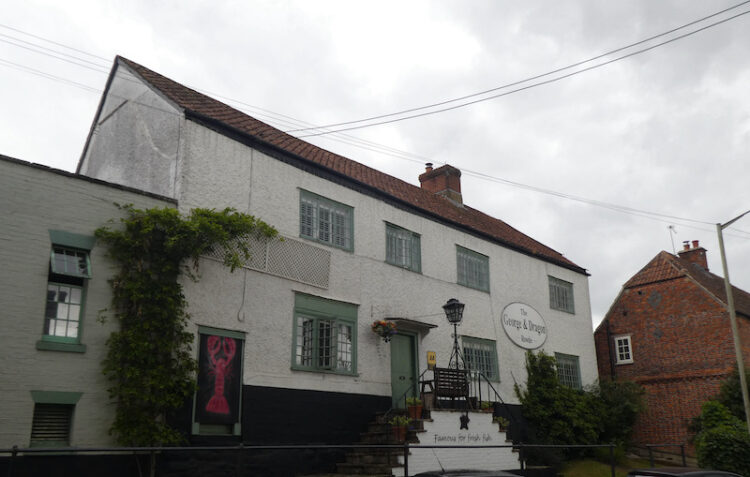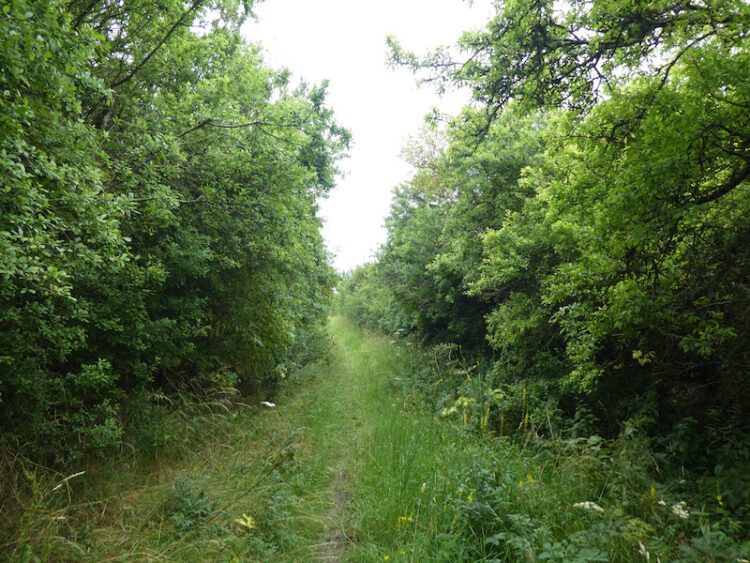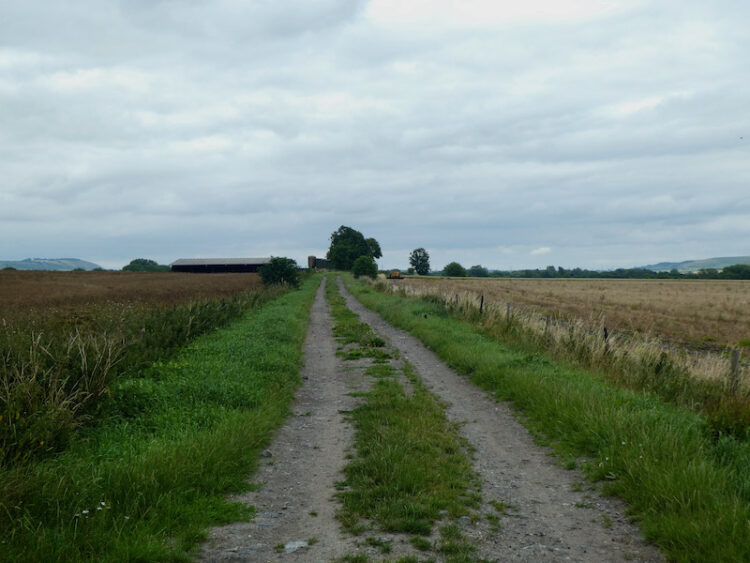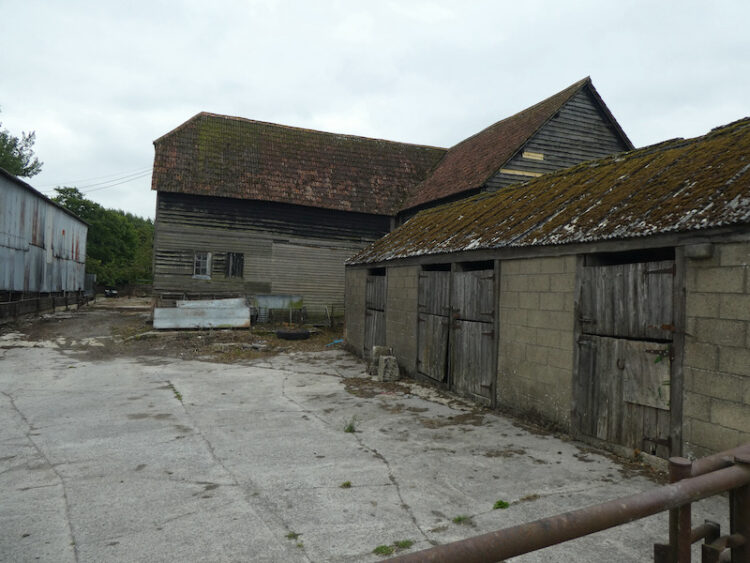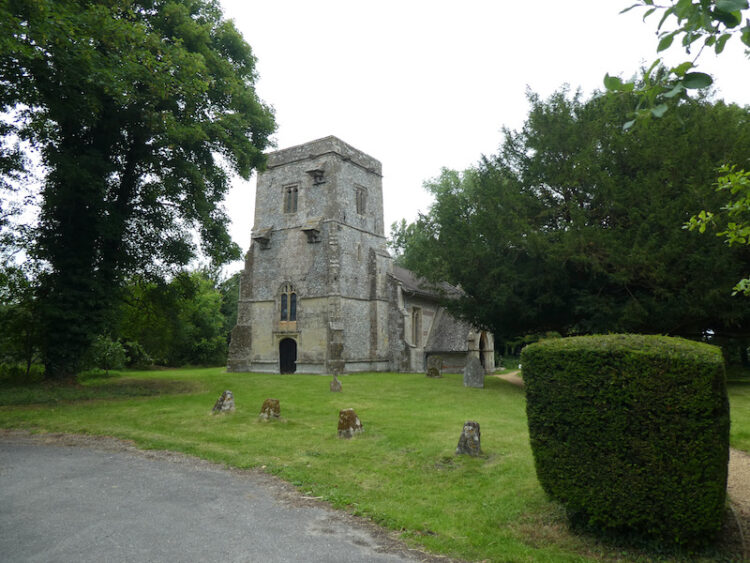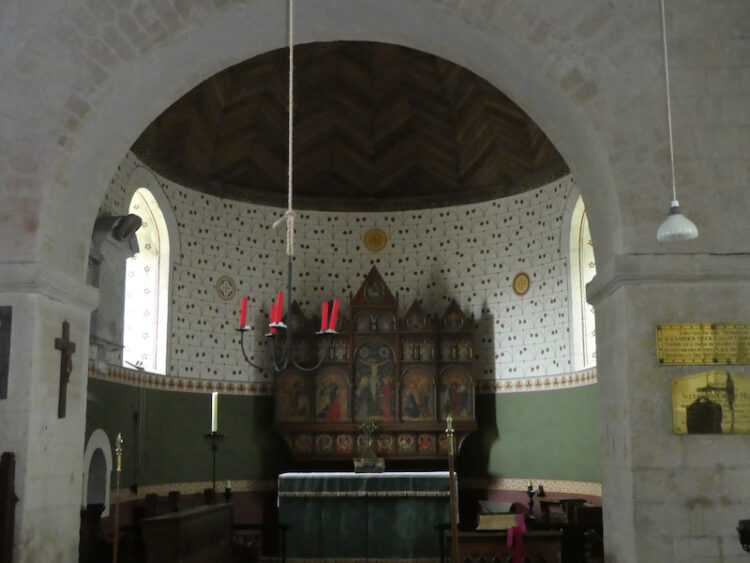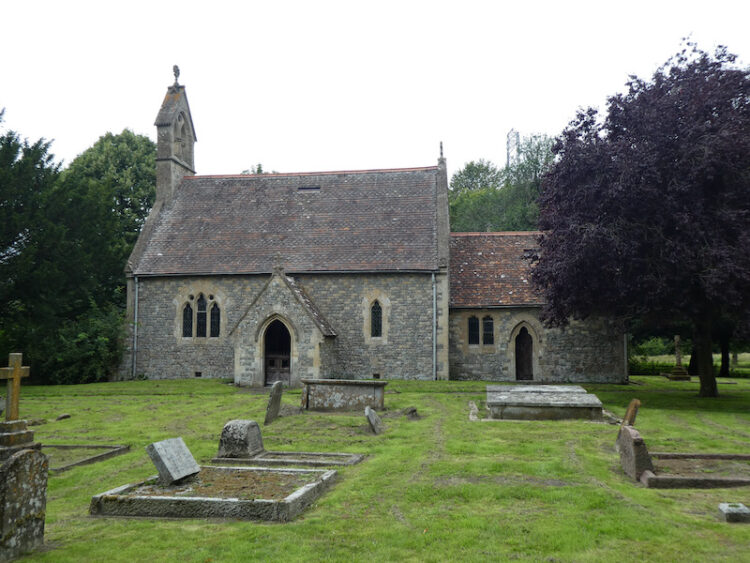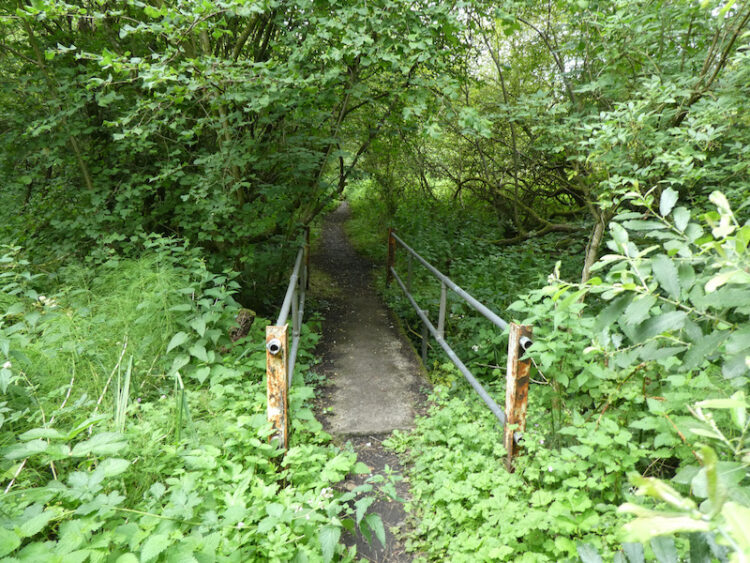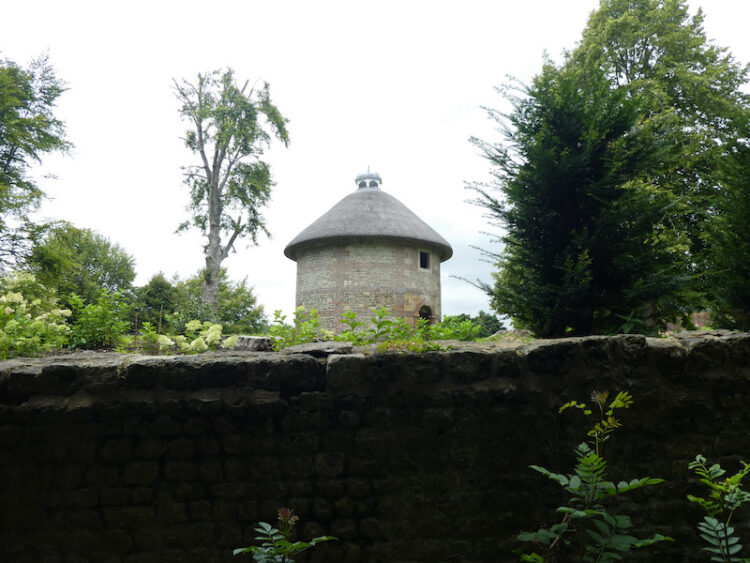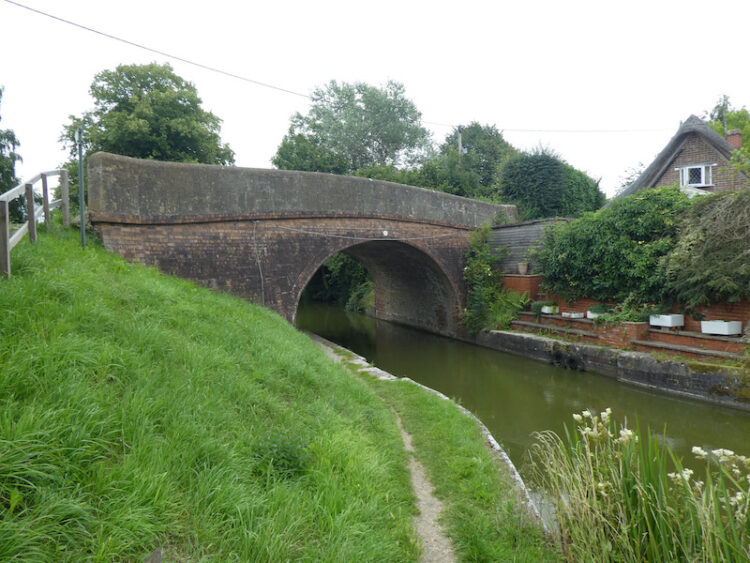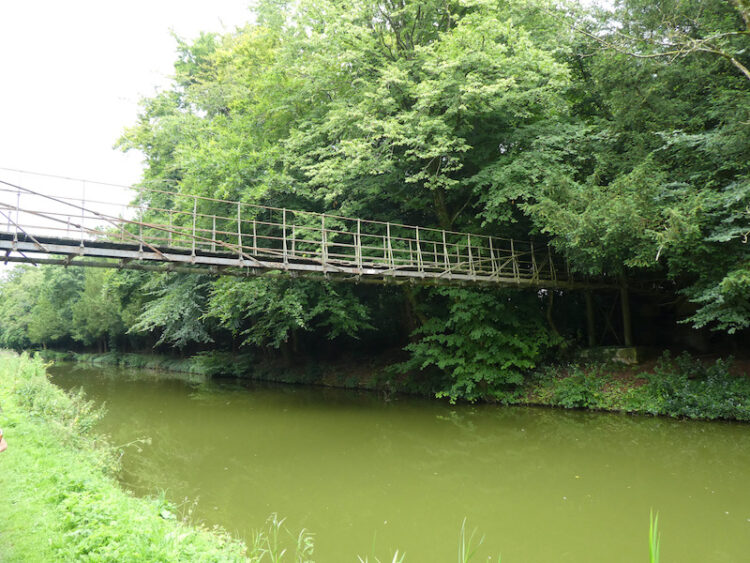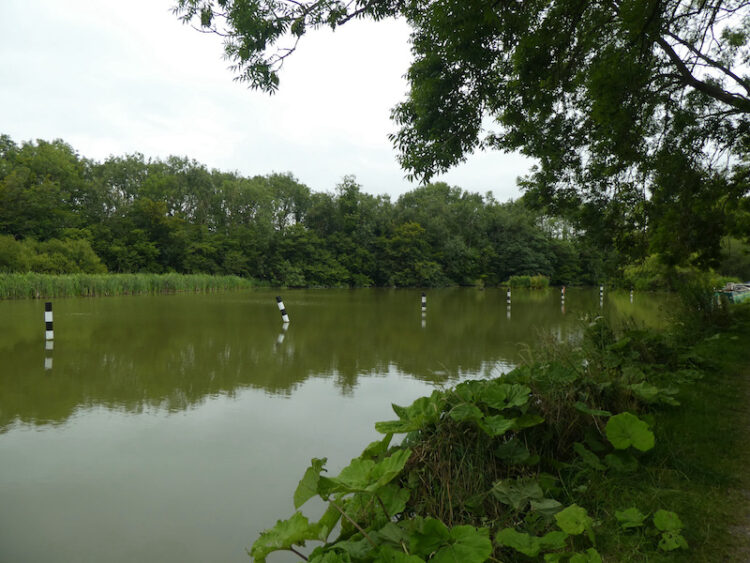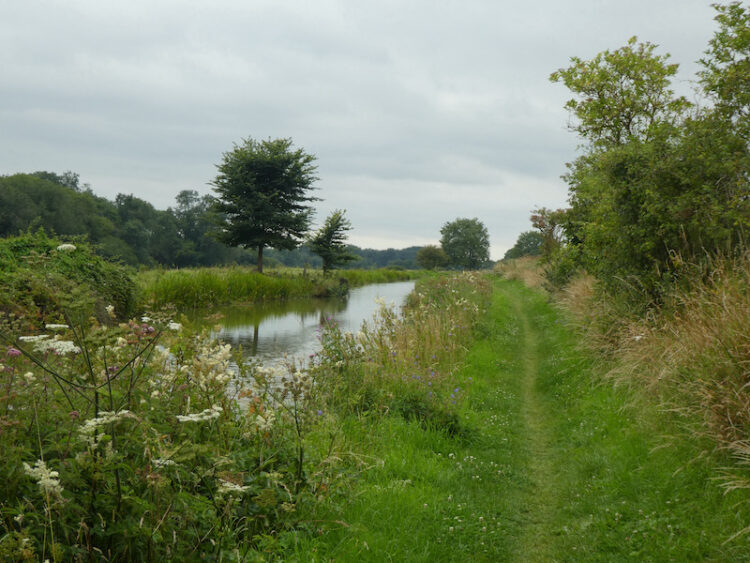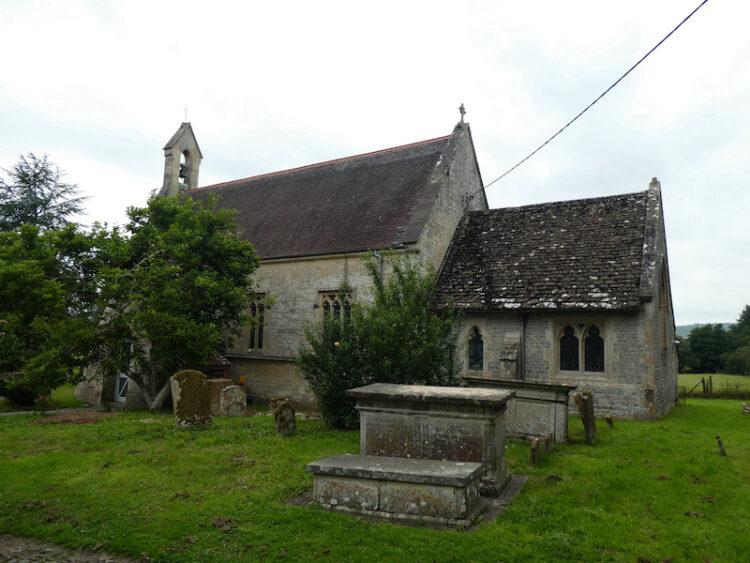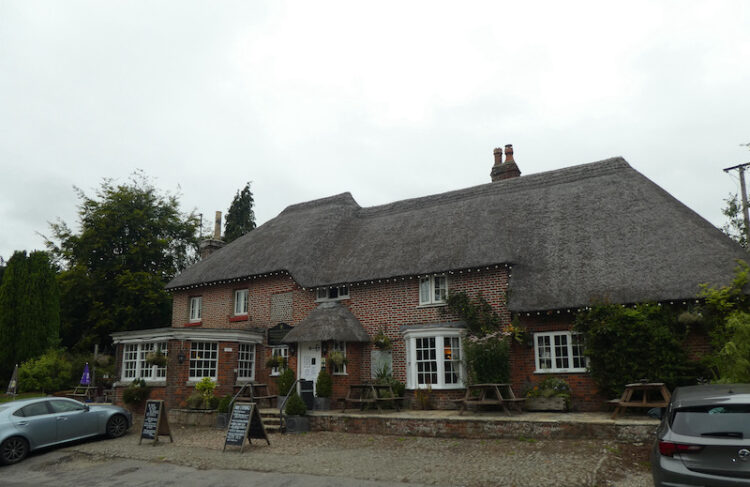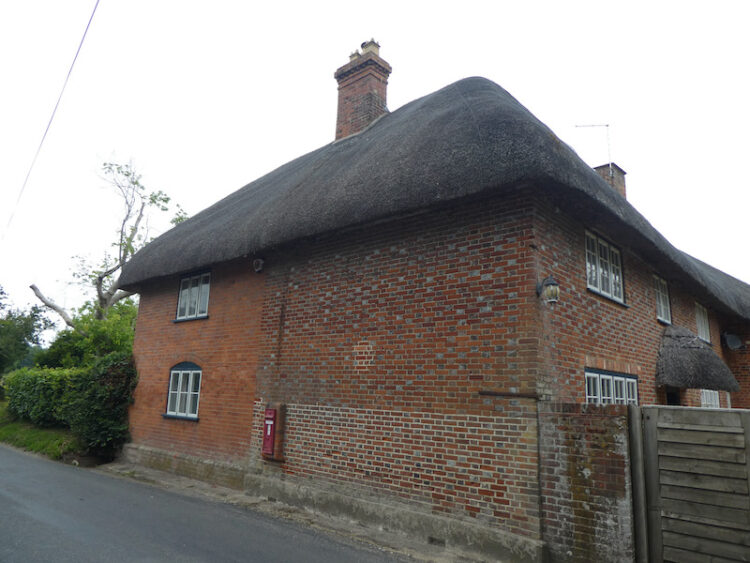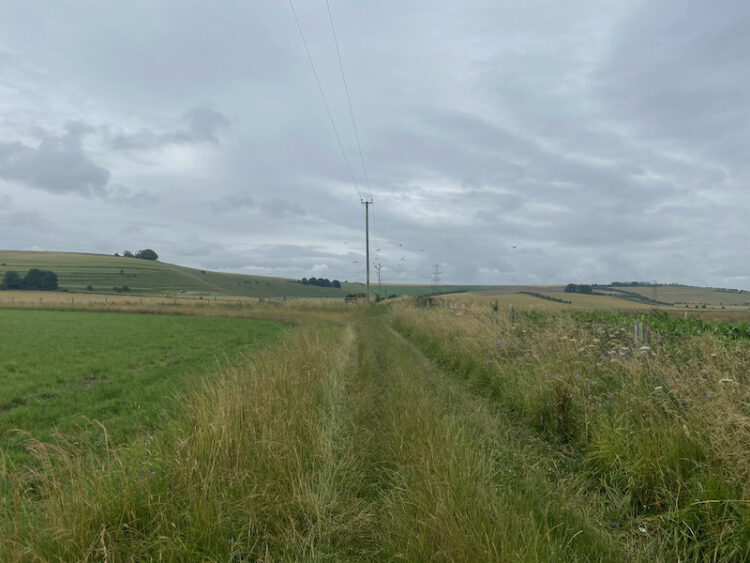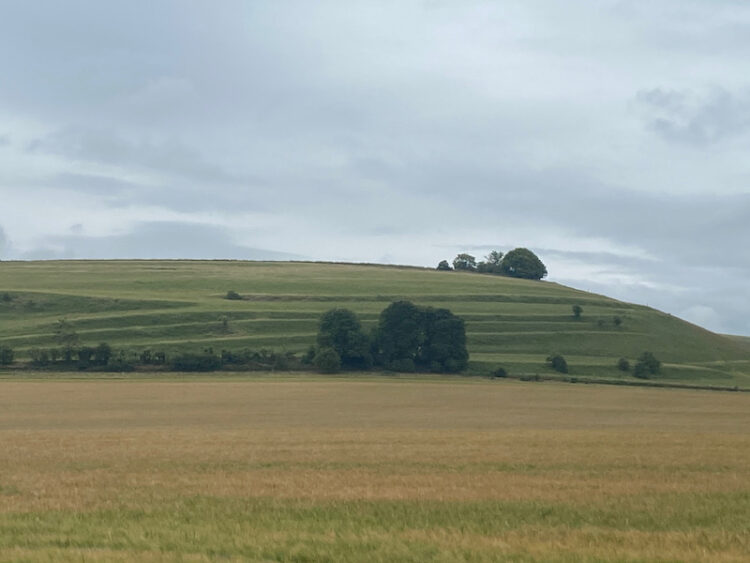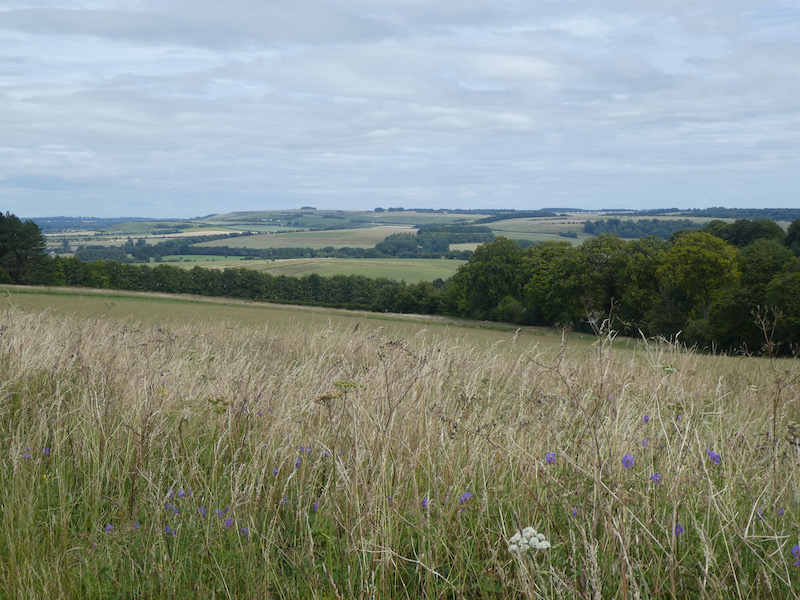Earlier in the year I visited the Cherhill Monument and White Horse with Mandy my walking buddy. It was part of our quest to visit all the Wiltshire white horses in 2020. It was a cracking area to visit so today our walk is going to include a trip to the monument.
The starting point for our walk is a car park on Roundway Hill (Grid Ref: SU014641), this is only a short drive from Horse Lane Farm CL. We head off along a wide track heading in a northerly direction with the aerials on Morgan’s Hill in the distance in front of us.

In this area on the 13th July 1643 the Battle of Roundway Down was fought between the Royalists, led by Lord Wilmot, and the Parliamentarians, led by Sir William Waller. The day ended in a resounding victory for the Royalists. The fleeing Parliamentarians inadvertently rode their horses over the steep edge of the hill fort at Roundway Hill which is now known as Oliver’s Castle.

After one and a quarter miles we reach a junction of tracks and turn right to head east towards a minor road. After crossing the road we continue in the same direction with Furze Knoll on top of Morgan’s Hill to our left.

This is another clear track easy to follow without much reference to the map, allowing us to take in the surrounding scenery across the vale.

We stay with this track to pass the entrance to Baltic Farm we now have sight of the monument on Cherhill. I have promised Lynnie that when we reach it we will stop for lunch so our pace quickens.

At a junction of paths we turn left and head north on a footpath that soon runs besides a plantation. At a crossing of tracks we go straight over to join the Wessex Ridgeway and White Horse Trail.

Passing through a gate we enter access land and continue uphill. To our left is the impressive bowl in Calstone Down and we decide this would make the perfect spot to stop on the downs for lunch.

Resuming our walk we follow the path up to the Iron Age hill fort of Oldbury Castle.

We walk through the ramparts towards the Lansdowne Monument. This is a popular spot so we take care to ensure we maintain a good social distance from all the families that are here. The monument, which is known as the Cherhill Monument or Lansdowne Monument stands at 125 feet high and is a clear landmark. It was erected in 1845 by the 3rd Marquis of Lansdowne to commemorate his ancestor Sir William Petty (1623-1687) and was designed by Sir Charles Barry, the architect of the Houses of Parliament. Petty was the son of a cloth maker and studied to become Professor of Anatomy at Oxford. He served as Physician General in Oliver Cromwell’s Army in Ireland and whilst there reportedly conducted the first land survey of the Country. After the restoration of the Monarchy he was appointed a Commissioner of the Royal Navy by Charles II. He was a founding member of the Royal Society and attained great wealth.

The lower parts of the monument are clad in timber with a rubble guard, this was first erected in 2013 and the National Trust, who now own the site recently sought a further five-year extension to retain this protective structure. Apparently, they need this extra time to raise the £2.7m required to restore the monument. It is reported in local newspapers that the National Trust said they might close the entire site if the permission for the protective structure was not granted. It is a pity that between the National Trust and the current Marquises of Lansdowne they cannot find the funds required to ensure continued safe public access to the site without the need for the unsightly cladding.

From the monument we wander around the hill fort ramparts to get a view of the White Horse. I tell Lynnie that there is a much better view from the bottom of the hill, but when she realises that we would need to come back to this point to continue our walk she politely declines.

From the monument we take a path heading west to reach a gate. Looking back we get a good view of the monument and white horse.

After going through the gate we continue west to gradually descend the downs.

The path reaches a gate and then joins a hedge lined track.

We stay on this track for just over half a mile then just as we reach houses we turn left to head south along a track towards Calstone Mill. Near the mill we take the permissive path around the property. The footpath runs in front of the mill, but I am not one of those walkers who insists on walking the route of a footpath when it goes through someone’s garden. As long as a well maintained alternative is supplied I am content to preserve people’s privacy. We catch a glimpse of the 18th century mill which was used for corn and cloth.

We stay with the path to reach Calstone Wellington and then turn left along a minor road to pass Manor Farm

As we walk along I say to Lynnie this is very familiar, but I know we have not walked here before. Then I realise that a couple of years ago we attended the wedding of our niece Kate at the Wellington Barn which is up a lane to our right.
We continue through the village passing an area where trees were planted in 2012 to mark Queen Elizabeth II Diamond Jubilee and then take a lane on the right to walk up to have a look at the 15th century St Mary’s Church.

From the church we go through a gate and take an uphill footpath through a field of pasture. After going through a gate we meet a couple walking towards us. They have just come down a track on the left and tell us this is a permitted route to connect to another footpath which heads up Morgan’s Hill. We take their advice and turn left to walk on the track around the edge of the field. On meeting a footpath besides a copse we go right and continue uphill.

We carry on across a track and then head more steeply up towards the wireless station on Morgan’s Hill. Apparently in 1913 a Marconi Imperial Wireless Chain receiving station was built here, this was converted to military use in 1916. From 1920 to 1929 it was the base for the first British long-range maritime communications station. More recently it was used by the Wiltshire Constabulary for radio communications and in recent years has been used for mobile phone telecommunications.

We carry on to reach the impressive Wansdyke and turn right to walk beside it. To our left the trig point on Morgan’s Hill is clearly visible. When I visited this trig to bag it in March it was on its side, so it is good to see it back upright. I need to get close to “bag” a trig, but Lynnie is content to claim one from a few hundred yards away. So will be wanting this one added to her list.

We now walk west following the route of this early medieval dyke that once spanned the Western part of the Country from Savernake Forest towards the Severn Estuary. The part we are on is a section of the remaining Eastern Dyke which is nine miles long.

We stay with the Wansdyke path as it leaves the access land and joins a track where we continue to head west passing through a wooded area to reach a road. We cross and then turn right to follow a path along the edge of the field. This is not shown as a footpath on the map, but it does mean we avoid walking along the busy road. On reaching a track we turn left and walk a few hundred yards to a crossing of tracks. Here we turn left and head south along the track towards Hampsley Hollow.

The track soon runs besides the edge of North Wilts Golf course and then reaches stables at Hampsley Hollow. The track becomes a tarmac lane and we stay with this to reach Heddington. As we enter the village we turn right into Hampsley Road and follow this to a junction with Stockley Road where we turn left and soon pass the attractive thatched Ivy Inn.

We continue through the village to reach Church Lane and soon reach the entrance to St Andrew’s Church.

From the church we continue along Church Lane to a junction where we turn right to walk out of the village. As the road sweeps to the left we take a track on the right passing a farmyard and then providing a good view of the church with interesting windows set in the roof.

We stay with this track as it initially heads west and then sweeps to the south with views of the top of the Buddhist Temple at the International Meditation Centre which was established on this site at Splatts House in 1978.

On reaching a track we turn left and make the long steady ascent of Beacon Hill.

It is now a warm afternoon so we are grateful when we reach the top of the hill and turn right on a track with a fine view of Oliver’s Castle.

We continue on the track to reach a junction of tracks where we turn left and then almost immediately right to follow the route of the Mid Wilts Way along a wide track.

Just as we reach the brow of Roundway Hill we take a path on the left which heads west towards a plantation and then walk through the trees to return to our starting point.

Our walk has covered fourteen miles and there have been stunning views all the way around. This really is a cracking area to walk.
To follow my walk you will need Ordnance Survey Explorer Map OL157& 156
You can view this 14 mile walk on OS Maps and download the GPX File Here
29th July 2020
© Two Dogs and an Awning (2020)
All information on this site is provided free of charge and in good faith and no liability is accepted in respect of damage, loss or injury which might result from it. To the best of my knowledge the routes are entirely on public rights of way or within areas that are open for public access.
Walking can be hazardous and is done entirely at your own risk. It is your responsibility to check your route and navigate using a map and compass.
























